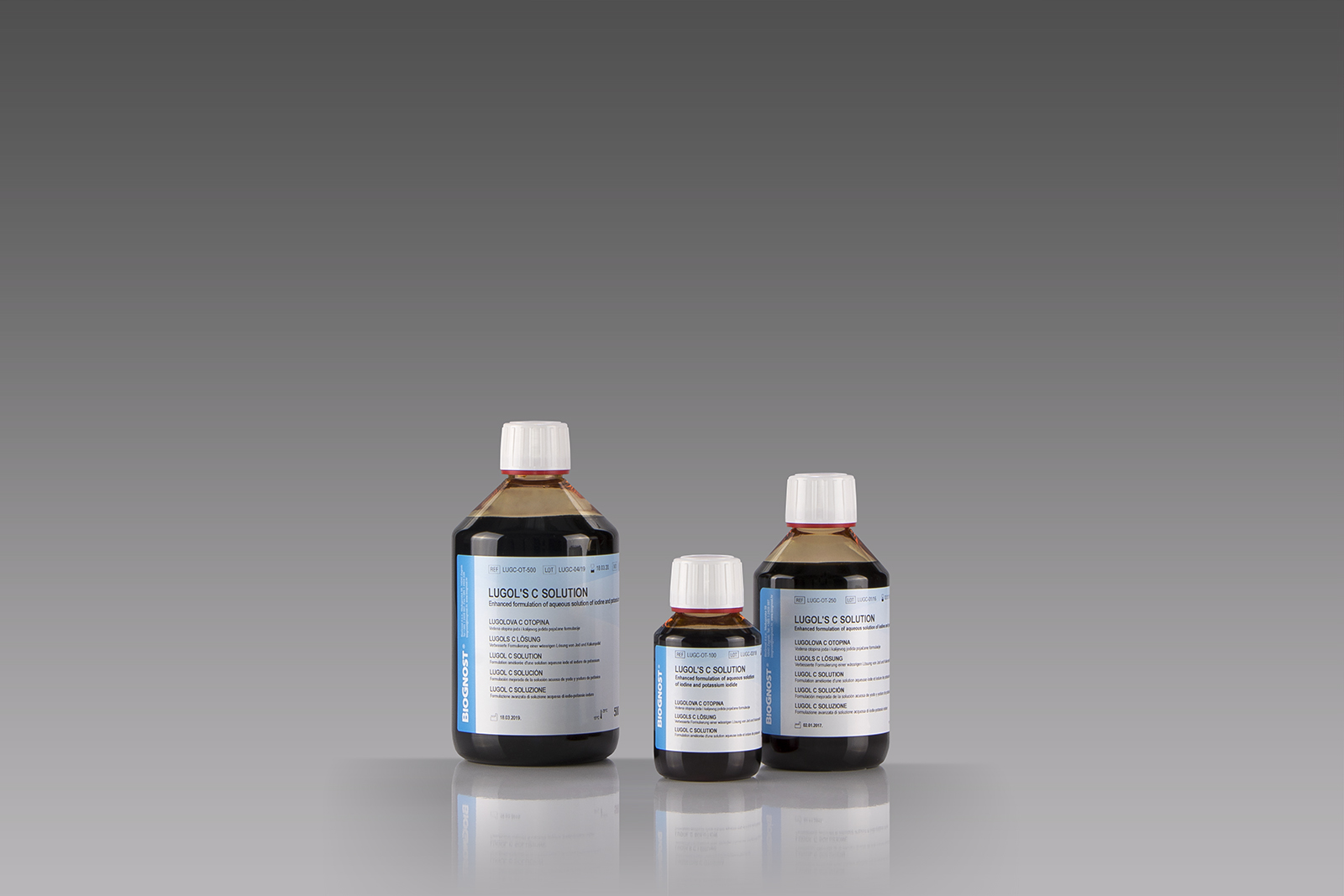Introduction
Lugol’s solution, named after French physician J. G. A. Lugol, is widely used in the field of medicine. It is most commonly known as an antiseptic, disinfectant and starch indicator. Lugol’s solution affects the carbohydrate molecules in the following way: iodine binds to complex carbohydrates (starch in plant organisms, glycogen in animals), staining them in the process. Lugol’s solution is an aqueous solution of iodine and potassium iodide. Lugol’s solution is used in cytology for detecting abnormal squamous cells of the vaginal epithelium and cervix epithelium by using the Schiller’s test (used during colposcopy). Normal, healthy epithelial cells produce glycogen. Cells that carry the risk of neoplasia and developing tissue tumors do not produce glycogen and staining does not occur (CIN cells). Apart from gynecology, Lugol’s solution is used in parasitology for staining parasites in stool samples. It is also used in zoology for staining protozoic organisms in order to enhance the contrast of internal structures (nuclei and glycogen vacuoles) and for preserving the protozoa, and in microbiological testing Lugol’s solution is one of the components of Gram staining.


